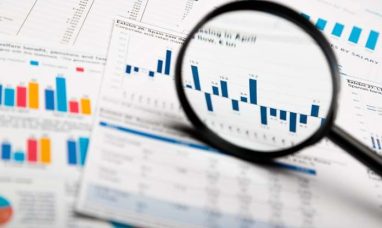Johnson & Johnson’s (NYSE:JNJ) second-quarter results are expected to be revealed on July 19, which happens to be a Tuesday. Analysts are currently forecasting the following profits per share for the quarter. Earnings per share of $2.56 for the second quarter would represent a 3% rise over the same period last year. That’s not particularly strong, but it’s also not a disaster. Earnings per share growth are expected to surge to roughly 5% – 6% in the year’s second half, with growth shifting to the fourth quarter.
Revenues are expected to be $23.9 billion in the second quarter, representing a growth rate in the low single digits. Earnings projections have been trending downward in recent months.
Higher COVID case counts in several of Johnson & Johnson’s (NYSE:JNJ) markets have resulted in fewer elective surgeries, which impacts the company’s medical technology division. However, because these surgeries are most likely to be performed in the future, these sales aren’t lost permanently; instead, they are pushed into the future by a couple of quarters, which isn’t too awful. EPS projections fell somewhat in the last month but by a couple of percentage points in the previous three and six months.
JNJ (NYSE:JNJ) isn’t particularly subject to inflation because its margins are substantial, and input costs aren’t a significant factor. However, inflation could have a detrimental influence on the company. When consumer budgets are squeezed by rising energy and food prices, they may spend less on other commodities. Of course, they will continue to buy consumer essentials, but they may select cheaper store brands rather than the higher-quality, higher-priced products sold by Johnson & Johnson.
Johnson & Johnson Stock Key Metrics
Johnson & Johnson has a diverse business approach that spans multiple industries. Pharmaceuticals, MedTech, and consumer staples are all relatively durable to recessions, making JNJ a good selection for those concerned about a prospective US recession. It is facing some headwinds from inflation, the COVID pandemic, and a strengthening US dollar, but these are unlikely to be significant long-term difficulties. Even in the short term, JNJ is predicted to grow its revenues and profits, demonstrating its tenacity.
Johnson & Johnson’s tenacity is also demonstrated by its exceptional dividend increase record. JNJ has boosted its dividend for 59 years, earning it an A+ in the Dividend Growth and Dividend Payments categories of Seeking Alpha’s ranking model. Overall, Seeking Alpha’s Quant model rates JNJ as neutral (3.4), while it is close to a Buy rating (3.5 and above). Johnson & Johnson is rated a Buy by Wall Street, with an average price objective of $189, meaning a 7% gain over the next year. With a dividend yield of 2.5 percent added on top, Johnson & Johnson might provide total gains in the 10% level next year if Wall Street is correct.
Johnson & Johnson has increased its dividend by 6% over the last five years. The most recent dividend raise was announced in April, so it will likely be another nine months before the company raises its dividend again. In terms of dividend safety, the ultra-long track record of dividend growth shows that the probability of a dividend cut is relatively low.
During the Great Recession, Johnson & Johnson’s earnings per share fell by only a couple of percentage points in 2007 and 2009, while overall earnings per share climbed dramatically between 2006 and 2010. Most economists anticipate a probable recession in 2022 or 2023 would be less severe than the Great Recession. Johnson & Johnson’s profits would presumably be under much less strain in a shallower recession. Investors should not be concerned about a dividend decrease because JNJ appears to be among the best-positioned corporations to weather any macroeconomic crisis.
Is JNJ Stock Overvalued?
Johnson & Johnson is currently trading at about 17x this year’s profits. That is not an extremely low valuation but also not particularly high. That is true whether we compare its valuation to the overall market (which is currently at a comparable level), and it is even more true when we look at how JNJ was valued in the past.
We observe that Johnson & Johnson trades at a 10% discount to the 5-year median EBITDA multiple. At the same time, the stock trades precisely in line with the 10-year median EBITDA multiple, indicating a reasonable price.
As a result, I do not feel Johnson & Johnson is now overvalued. It’s not an absolute bargain stock, but shares appear to be reasonably valued or modestly undervalued currently. Although It may not be the best moment to buy JNJ stock right now, it also does not appear to be a particularly bad time.
Is JNJ Stock A Buy, Sell, Or Hold?
Johnson & Johnson will create considerable earnings and revenue growth this year, but obstacles such as a high US dollar will prevent the company from gaining a significant increase.
Nonetheless, Johnson & Johnson is a solid investment that provides consistent dividend increases, a dividend yield that is substantially above the market average and is resistant to recessions. The last factor, in particular, may make JNJ attractive in the coming months on a relative basis. A recession has become more plausible as the Fed tightens financial conditions to drive down inflation.
The shares appear to be moderately valued to slightly undervalued. Over the last year, shares have been available for $155-$160. Even if you buy in the $170s, it appears likely that long-term returns will be solid due to some profits, dividend growth, and dividend yield. That’s not a bad bargain for a low-risk stock.
Featured Image: DepositPhotos © sutlaa

















